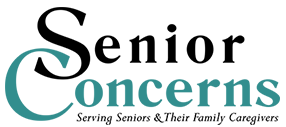As of September 2020, almost 13 million people in the United States were unemployed. Of course, a great deal of the job losses can be attributed to COVID.
I’m sure any one of us, including me, can name multiple people we know who are out of work as a result of the pandemic; half our staff here at Senior Concerns had to be furloughed due to the closure of our Adult Day Program.
In a post-COVID world, many industries will look different, and many jobs as well.
While having nothing to do with the pandemic, my husband lost his job several months ago. This was a bit of a shock. He is the main breadwinner in our family, and the loss of his job could cause quite a disruption in our lives if he were to remain unemployed for a long time.
Looking for a job during the pandemic seemed fraught with challenge.
It has been 13 years since his last job move. Dusting off the old resume was an understatement. So much has changed, even in the past five years, in terms of professional resumes. In crafting such a document, personal branding is critical, focusing on what makes you distinguishable from others.
People aren’t looking at resumes anymore; computers are. Employers are using software to search your resume for specific keywords related to the position for which you are applying.
No matter how qualified you are for a position, if you don’t use the right keywords it is likely that you won’t make it past the initial screening stage to get the interview you want.
Working your network has never been more important. With so many people unemployed, the field of competitors is huge. Personal connections and referrals are vital to help you stand out.
Online networking platforms, like LinkedIn, allow you to search for jobs and see if you have a connection at a company with an open position. A warm introduction is far more effective than sending in your resume online and hoping for the best, even when you think you are a perfect match.
Even before COVID, there were far fewer permanent jobs as employers sought to save money on expensive employee benefits. There’s much more work on a part-time or temporary basis than there has ever been.
This makes a job search even more complex because to replace one full-time salary you may need to cobble together two or three part-time jobs or look for temporary assignments.
Office settings have changed dramatically too. Many companies’ offices are still closed, and employees are working from home. Google, for example, has extended its global voluntary work-from-home option through June 30, 2021, for people whose jobs don’t require them to be in the office.
That change comes as both good and bad news.
If you are a “people person,” this new solitary work environment might be tough on your mental health. And if you are not a self-motivated individual, it may be hard to get your work done.
However, this virtual world opens up the job market to a larger geography. Now a job in San Francisco could be filled by a person in the Conejo Valley. That widens the potential job market for the job seeker, but it also widens the candidate pool for the company, making those jobs more competitive.
As for my husband, he has secured a temporary assignment with a company he loves in San Diego. If not for COVID, chances are this firm would not have looked beyond the San Diego metro area for filling the role. And his opportunity came because of a personal referral from someone in his network.
If you or a loved one is looking for work, Forbes has an excellent podcast by Melody Wilding titled “How To Job Search in the Age of COVID-19, According to a Career Coach.”




